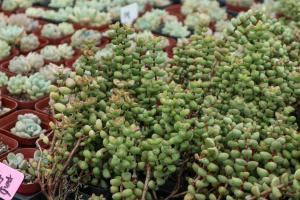Can I Plant Hydrangeas in Pots?
Hydrangeas can be a beautiful addition to any garden or outdoor space. But what if you don't have a garden or outdoor space? Can you plant hydrangeas in pots? The answer is yes, you can plant hydrangeas in pots. In fact, planting hydrangeas in pots is a great option for those who live in apartments, have limited outdoor space, or just want to add some color to their patio or balcony.
Choosing the Right Pot
When it comes to choosing the right pot for your hydrangeas, there are a few things to consider. First of all, you want a pot that is large enough to accommodate the plant's root system. A pot that is too small will restrict the plant's growth and could cause it to become root-bound. You also want a pot that has good drainage. Hydrangeas do not like to sit in water, so choose a pot with drainage holes at the bottom.
Another thing to consider is the material the pot is made of. Terra cotta, ceramic, and plastic pots are all good options. However, terra cotta and ceramic pots can absorb moisture, which can cause the soil to dry out faster. Plastic pots, on the other hand, can retain moisture, which can cause the soil to become too wet. Choose a pot that is made of a material that suits your needs.
Soil and Fertilizer
Before you plant your hydrangeas in pots, it is important to choose the right soil. Hydrangeas prefer well-draining soil that is rich in organic matter. A good potting mix that has been formulated for acid-loving plants is a good choice. You can also add some perlite or vermiculite to the soil to improve drainage.
Fertilizer is also important for hydrangeas. They require a balanced fertilizer that contains equal amounts of nitrogen, phosphorus, and potassium. You can fertilize your hydrangeas every two to three weeks during the growing season with a water-soluble fertilizer.
Care and Maintenance
Once you have planted your hydrangeas in pots, they will require some care and maintenance. Water your hydrangeas regularly, but be careful not to overwater them. Hydrangeas do not like to sit in water, so be sure to allow the soil to dry out slightly between waterings.
Prune your hydrangeas in the early spring to remove any dead or damaged wood. You can also prune them to shape them and encourage new growth.
Hydrangeas are susceptible to pests and diseases, so be sure to keep an eye out for any signs of trouble. Spider mites, aphids, and powdery mildew are all common problems. Treat any pests or diseases promptly to prevent them from spreading.
In Conclusion
Planting hydrangeas in pots is a great option if you don't have a garden or outdoor space. Just be sure to choose the right pot, soil, and fertilizer, and provide your hydrangeas with the care and maintenance they need. With a little bit of effort, you can enjoy beautiful, blooming hydrangeas in your outdoor space, no matter how small it may be.

 how many times do yo...
how many times do yo... how many planted tre...
how many planted tre... how many pine trees ...
how many pine trees ... how many pecan trees...
how many pecan trees... how many plants comp...
how many plants comp... how many plants can ...
how many plants can ... how many plants and ...
how many plants and ... how many pepper plan...
how many pepper plan...
































